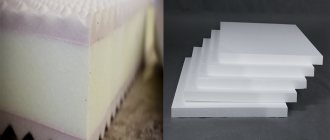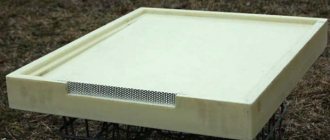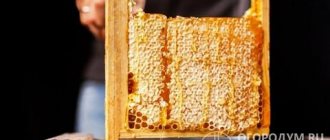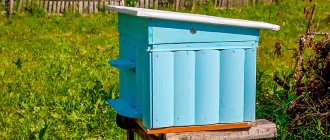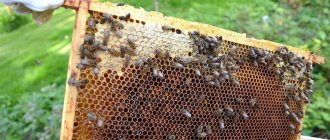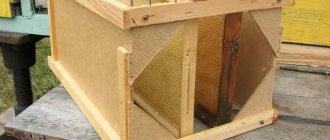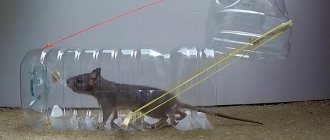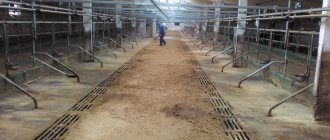Even the most modern body of evidence has considerable weight. During seasonal work when bees migrate, the apiary owner has to constantly move and rearrange the hives. It is difficult to do without labor mechanization. Apilift is a convenient means of transporting bee houses. How to make such a convenient lift with your own hands.
The lower the overall weight of the apiary cart and the greater the strength, the more convenient and practical it is. The standard option is a platform (according to the size of the hive), a lifting mechanism (lever), two wide wheels, a comfortable long handle and a fastening mechanism.
When compared with a homemade cart, the finished models are strong, lightweight and durable, have a simple lifting mechanism, compact size and a warranty period, which is important.
If you do not have welding skills, then it is better to purchase a ready-made apilift, factory-produced. The price of such mechanization is not high. The main advantages are obvious:
- Stainless steel frame – light and durable. If you buy such material, the cost will not please you;
- properly sized, securely fortified platform;
- several options for clamps at the bottom and top for reliable fastening;
- two wide wheels with all-terrain tires designed for difficult terrain;
- the handles are located in such a way that a person of any height can comfortably use the beekeeper's cart.
The wheel mechanism is equipped with a shock-absorbing system, since hives often have to be transported not on asphalt, but over rough terrain. It is important not to harm the bee family - the factory version eliminates accidental falls.
Another advantage is that the cart folds easily and does not take up much space during winter storage. Self-production does not guarantee such convenience.
Expensive but convenient options, such as Kaptarlift from Hungary, equipped with an electric lift, are a real dream, but they are not cheap. Is it possible to do such an apilift yourself?
It is important to clarify that all imported lifts are designed for polystyrene hives, which are several times lighter than wooden ones.
A few more words about the cons. Ideally, a practicing beekeeper needs two devices:
- for daily work, a small winch - lift, turn, move the hive a little in the sun;
- for loading and unloading onto an on-board vehicle - a kind of miniature loader.
Therefore, many people make lifts themselves, focusing on the individual specifics of the work.
Trolley with lifting blocks
We have already touched on the topic of mechanization of work in the apiary - we looked at a homemade apilift and several models of carts developed by folk craftsmen.
This article can be found here: Cart and scales - important apiary homemade products
Today we will continue the topic and look at other carts for transporting hives, assembled with our own hands.
A trolley equipped with lifting blocks is designed primarily for moving a set of frames . But we put it in first place here, as a convenient means of mechanization for working with multi-body structures.
This device does not move the entire hive, but it makes the maintenance of the hives much easier. The time for replanting nests is reduced, since wedge-shaped bars can be abandoned. A set of honeycomb frames can be easily transferred from one body section to another.
To do this, the cart is brought closer to the beehive so that its hook is strictly in the center of the roof, and the wheels go on both sides of the house. After which the taphole liner is removed, and the device is installed through the taphole slot on the bottom of the house. The cover is removed and the frames are raised by rotating the handle upward. Then the grip mounted on the load hook is carefully inserted under the protrusions of the hangers.
The honeycomb frames are in a suspended state while changing bodies. They are lowered simultaneously, removing the gripping rods. The handle of the mechanism is moved to the horizontal plane - the pushers release the honeycombs, and under the weight of their weight they sit tightly on the folds. The vacated hull section is taken away on the same trolley.
Installation procedure
At its core, the mechanism is a simple lifting device assembled from ropes and blocks. Lifting something requires a force equal to half the force of gravity. The worker, losing in distance, ultimately gains in strength.
Instead of an introduction
At its core, the discussion of lifts is an endless and sometimes controversial topic. Each owner has his own approach to maintaining an apiary. Some beekeepers actively use homemade carts and lifts. Others operate factory samples of mechanisms. Still others modify the purchased model to suit their needs.
We have already described homemade mechanization tools:
Here we consider a trolley lift for hives in three versions: Devices for transporting hives
And here is an overview of several beekeeping crafts of this type: Trolley and scales are important beekeeping crafts
Here is another interesting idea for self-assembly, which we spotted on a well-known forum:
This model of hive lift is designed to work with Alpine hives. Its main advantage is its low cost. The supporting elements, racks, and crossbar are made of wood. The gate is welded from a metal pipe. The lifting mechanism uses two rollers and a strong rope.
This is one of the variations of the model with lifting blocks. Large collapsible lifts are used for nomadic apiary maintenance. With their help, hives are loaded onto trailers and platforms. And small carts equipped with a lifting unit are designed for internal apiary needs - with their help, houses are moved from one place to another within one point, or transported to a trailer and used together with large collapsible lifts.
Apiary trolley - profile pipe for the frame
We make the side frame posts from a 2m pipe:
- on the outer sides it is necessary to make cuts, 20 mm wide, in which the axis of the carriage bearings will be installed;
- Using a screwdriver, install the fixing bolts on top that regulate the bearing axis;
- We weld the handles at a convenient level;
- We make the frame from four pipes - the upper transverse one is attached in the middle to the side pipes, the lower one is attached to the ends of the side pipes, to strengthen the structure we weld plates on the back side. The result is a kind of lattice with a central guide on which the fixing clips and carriage are placed. Along this guide, using a cable, we will lift the evidence onto the cart, actuating the mechanism using a lever and winding the cable onto a reel;
- we drill holes in the lower cross member to secure the bracket that will hold the wheels;
- During manufacturing, a block with a bearing is attached to the upper cross member for smooth winding of the cable along which the carriage moves;
- We fix the reel itself for moving the cable on the second transverse crossbar;
- We weld a lever handle onto the reel, length 15 - 20 cm, for winding the cable;
- do not forget to install a stopper on both sides at the place where the reel and lever are attached;
- We use a spring to connect the handle of the lever mechanism and the metal cable. It is important that the tongue securely fixes the mechanism, preventing the loaded carriage from lowering;
- in the free position, the spring will rest against the stopper tongue and tightly fix the lift height.
Bee nosematosis - prevention and treatment
Installation of apilift wheels with your own hands - the outer diameter of the wheel is 38 - 40 cm, no more necessary:
- the wheel axle is secured with a bracket welded from a 2.5x2.5 cm pipe;
- fix the axle from the outside with nuts;
- We attach the bracket to the frame with 11 x 2.5 cm rectangular plates.
The beekeeper trolley bracket is welded from two profile pipes – 25 and 30 cm long, fixed at an angle of 90 degrees and secured to the frame with M8 bolts. This design allows the cart to be tilted at different angles.
It is easier to understand the design and operating principle by studying the drawings.
Main details
Parts and dimensions for lifting and transporting hives:
Parts and dimensions for lifting and transporting hives Bolts
Frame
Wheel
Wheel bracket
Stages of making a trolley for transporting hives
- Take the drawing.
- Prepare a metal material; another is not suitable, it will not be as reliable, and it will be impossible to transport large loads.
- Material from a car trailer, cart and other types of carts is suitable as a basis.
- The trolley can be used both vertically and horizontally.
- The lock consists of metal plates and hooks that form a grip.
- Platinums must consist of at least two holes.
- Pins should be inserted down the hole, the hive will be fixed, a ring and a hanging bracket will be placed on the top. This way you can hook the ring or pick it up with a cable. This is an ideal option for heavy multihull transport.
Varieties
There are two types: manual and mechanical. The choice of one drive or another depends on the size of the apiary and the daily load on the beekeeper. If the apiary is small and the evidence is small, then it will be more convenient to operate the cart using a manual drive. To lower or raise the hive, it is enough to apply a small force to the drive handle.
But if the apiary occupies large areas, then to save worker effort it is easier to install a mechanical drive. Thus, you won’t have to put any effort into working. And the apiary transport itself can be used for the safe transportation of the largest and heaviest hives.
How to do it yourself?
Of course, for those who don’t have enough free time, you can buy a ready-made wheelbarrow or use any gardening tool, but you can also make such a device with your own hands. Whether you have a stationary or nomadic apiary, there is still always a need to move the hives to another location. It is very difficult to carry them by hand; most hives are simply too heavy to lift. Let's look at exactly what options you can make with your own hands.
Option 1
For those who have ever seen an ordinary cart for household needs, it will not be difficult to make the same one for hives. All that is needed in this case is a wooden base in the form of a box where the bee houses will be placed, a handle for transportation, an iron structure where the wooden box will be installed and an axle with wheels (as in the photo above). It is better to choose larger wheels, then it will be more convenient and will be able to easily transport heavy, full hives.
Foulbrood in bees - treatment and medications
Option 2
This version of such an important item in beekeeping is more convenient to use, since with its help you can not only transport hives, but also lift them. In essence, it resembles a regular apilift. You can see what the homemade design we are going to talk about looks like in the photo.
As you can see, the welded frame of this cart forms the space where the hive is placed. Two axle shafts need to be welded to two longitudinal pipes; wheels will be put on them. Clamps will be welded to the bottom of the transverse pipe of the frame, where the handle will be inserted and attached.
Design
A homemade apiary lift cart consists of a welded steel frame to which an axle with two wheels is attached. You can choose wheels from a children's bicycle. The vertical frame posts are guides that contain fork rollers. See the drawings for more details. The cart is brought to the hive in front or behind and a fork is placed under it. Then you need to tilt the device towards yourself and pick up the evidence. Then, using a handle and nylon cords, the hive is raised to the desired height. Also, special clamps are made on this cart so that the bee house is in a vertical position.
Manufacturing process
You can make a lift with your own hands, having at hand the necessary drawing and, of course, materials. Let's say right away that all types of homemade carts should be made only from metal bases, otherwise the item will not be practical for transporting large loads. It’s great if you have the opportunity to take the base from an old car trailer, cart or other suitable cart. If you want a lift, or at least something similar, then you will have to spend more time and effort making the lifting device itself. You can learn more about this from the article on apilift. This version of the transport device (it is shown in the next photo) can also be used vertically for loading the hive and horizontally for transportation.
A grab grip consists of such basic elements as hooks and metal plates that form a lock. It is necessary to make two holes in these plates. The lower one is designed for inserting a pin to fix the hive, the upper one is designed for a ring and a hanging bracket. This ring can be put directly on a lifting hook or hung by a rope or cable. This grip is used for transporting particularly heavy hives, for example, multi-hull hives.
Useful tips
When operating a homemade apiary cart, it is worth considering a number of rules:
- Before starting full work with the lift, check it for technical serviceability. For this initial use, use it without a load, paying special attention to the following details:
- fixing screws and nuts, especially in those areas where the cable rollers are secured;
- tight fit of the support-frame bolts fixed through washers;
- completeness of fastenings in the grooves.
- If hives with heavy honeycombs are transported, check that they are securely secured.
- If possible, free the hive from all unnecessary components. In particular, it is worth removing all moving parts of the box that could frighten the bees.
- Check the strength of the frame fastenings inside the box. If the honeycomb breaks during transportation, this will cause aggression among insects. In addition, some of them may die.
- When loading the hive, make sure that the handle lock is secure, as it can pop out when the cart is tilted, which will lead to the load falling.
- When transporting bees, wear protective clothing, and also have a spray bottle and a net with you. All these measures will help protect yourself from insect bites in the event of an accident.
With some effort, the apilift can be assembled with your own hands, which will allow you to significantly save on the purchase of a store-bought apiary cart. In this case, great attention must be paid to the installation of small parts, on which the technical characteristics of the manufactured mobile unit will depend.
0
0
Copy link
Trolley with threaded lift
And this hive cart is closer in functionality to the classic apilift. It is adapted for convenient transportation of bee houses.
To transport the device, bring it closer to the bee house, making sure that the wheels are on its sides and the grip is above the roof.
Then the gripper bracket is lowered to the plane of the cover by rotating the lifting post coupling nut. In this case, the hook is at the top in the extreme position. After that, horizontal rods are brought in, making sure that the clamps are below the plane of the bottom of the bee house. The clamps are additionally secured through the holes using cotter pins.
Designs of hives for bees, their features, designs and how to choose
Next, the clamping elements are inserted under the bottom and clamped with knobs. The rotary boom is raised using the coupling nut - the house is carefully removed from the detachable bottom, transported to a new location, and lowered onto a stand prepared in advance. After which the clamps are released, and the transport mechanism is disconnected from the house.
Installation procedure
The mechanism is assembled according to the drawing as follows:
Carriage
The most complex trolley mechanism, which consists of a large number of parts:
- grip clamps;
- a block for a lifting cable, similar to that attached to the frame, is attached to the middle transverse pipe during manufacturing;
- moves along guides using ball bearings;
- a holder for the lifting fork mechanism is welded to the bottom of the carriage;
- The operation is controlled by the traction lever.
The design and operating principle of the carriage can be understood from the drawings.
The presented video and drawings will help you understand the manufacturing sequence. If you don’t want to spend a lot of money, then a simple lift can be made in two days with your own hands.
Blueprints
The pictures show drawings for a standard version of the trolley, with a load capacity of up to 150 kg. Using them, you can easily assemble a simple lift from available and inexpensive materials yourself.
If you need to change the dimensions of the lift, then, guided by the drawings, you need to add centimeters proportionally on each side and along the length. The indicated dimensions will provide a maximum load of up to 150 kg; additional fasteners will make the cart heavier.
The design of a hive lift and the principle of its operation
The lift trolley must have an adjustment function for transporting hives of various types, lifting and moving barrels and other containers. The purchased apilift model has the following set of characteristics:
- can lift loads weighing up to 150 kg;
- the maximum lifting height is 1.3 m;
- capable of capturing an object within 34.8-53.6 cm.
Taking these characteristics into account, all drawings used in self-production are drawn up.
The hive lift trolley includes several components:
- cable;
- lever arm;
- fixed and movable frames;
- axle with two wheels;
- forks;
- clamping bracket.
Adjustment of the apiary apilift for different dimensions of the load is carried out using installation holes and an adjusting screw.
Before use, the lever on the cart is raised and it rolls towards the hive. Using the adjusting screw, the clamping bracket is brought close to the hive, the remaining gap should not be more than 5 mm. Then you need to lower the lever handle down. The hive body is securely clamped on both sides. Using a winch, you can lift the load to the required height.
We also recommend reading:
The Cebro method in beekeeping: breeding queens and more Making hive frames with your own hands Bee diseases, their signs and methods of treatment Catching wild bee swarms using traps and empty hives
Usage
Before starting work, it is necessary to check the components of the structure for compliance with technical requirements. Carefully inspect the location of the fasteners, the fit of the fasteners, and the correct fit of the fasteners into the grooves.
It is important to pay attention to the functioning of the apiary cart during operation. Especially reliable fixation, since it is difficult for insects to survive the stress associated with transportation. For transportation, you need to prepare protective clothing and a spray bottle to prevent bees from attacking in the event of a fall.
Features of a trailer for transporting hives
The length and interprofile distance can be selected individually. The diagram shows one type of trailer.
Scheme No. 2. Structure of a trailer for transporting hives
The trailer consists of:
- Axles, load capacity, which is 1300 kg.
- Trailer base.
- Drawbar.
- Tailgate.
- Front side.
- Locking device.
- Support stand.
- Wings.
Additionally, you can use a closed metal bottom; it can consist of plywood or plastic; also a protective curtain so that the hive does not become dirty, especially if transportation is carried out in bad weather; specially installed profiles, you can adjust the distance at which the hive is placed.
Thus, choosing a cart or trailer for a hive is a very important and difficult task; the quality of transporting the hive depends on their type. They must be a convenient and reliable design. A do-it-yourself trolley for transporting hives is an ideal option for beekeeping.
Removing hail dents using glue and vacuum methods
It’s worth mentioning right away that these methods can only be used if the integrity of the paintwork is not compromised at the point of deformation.
If there are chips or scratches, then you need to get rid of them. You can read how to do this in a separate material on our website. The fact is that the tools described below have a strong mechanical effect on the surface, which can cause delamination of the paintwork. To remove hail dents with your own hands using the glue method, you need the following tools:
Dent removal kit
- minilifter (also called a reverse hammer);
- adhesive mushrooms (pistons) of various diameters;
- glue;
- hot glue gun;
- liquid for removing glue residues;
- hammer;
- Teflon core with a blunt tip.


